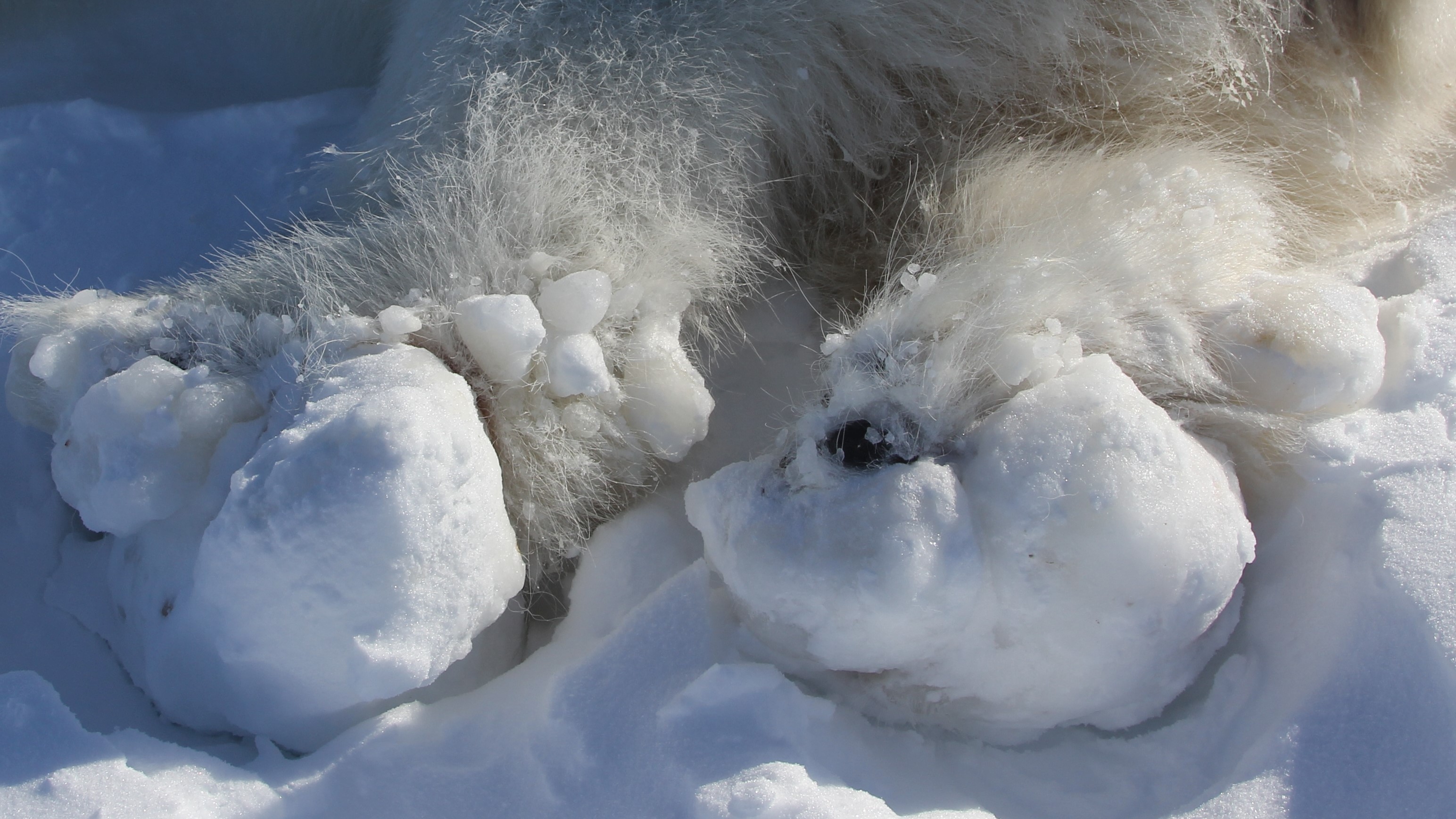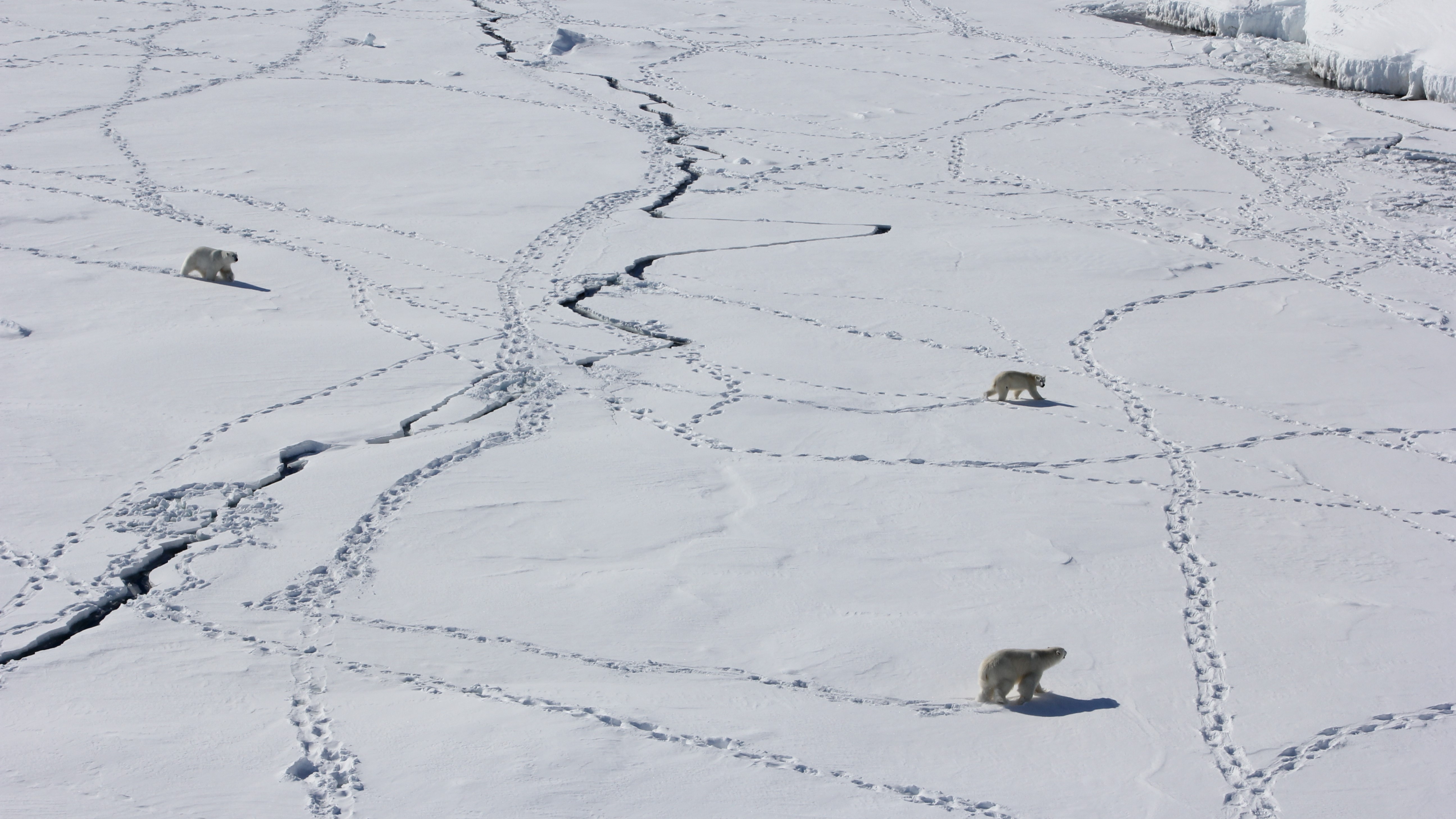Polar bears are getting horrific injuries and huge 'ice balls' on their paws because of climate change, researchers say
Population assessments have revealed that polar bears in Greenland are suffering from crippling wounds on their paws due to wet snow that gets stuck to the pads and freezes into blocks.

Polar bears are developing horrific wounds on their paws due to changing ice conditions in the Arctic, a new study reports.
In the most severe cases, researchers describe two bears with crippling, dinner plate-size balls of ice stuck to their feet. Beneath the ice balls, the bears' paw pads were covered in deep, bleeding cuts.
"I'd never seen that before," study lead author Kristin Laidre, a marine ecologist and associate professor at the University of Washington, said in a statement. "The two most-affected bears couldn't run — they couldn't even walk very easily."
This is the first time scientists observe such injuries in polar bears, according to the study, published Oct. 22 in the journal Ecology.
The debilitating ice balls likely formed due to slushy snow sticking between bumps on the pads that provide the grip polar bears need to walk on slippery surfaces. Snow accumulated on the pads and then froze solid, the researchers suggest, forming blocks of ice measuring 12 inches (30 centimeters) across.
"The chunks of ice weren't just caught up in the hair," Laidre said. "They were sealed to the skin, and when you palpated the feet it was apparent that the bears were in pain."
Sign up for the Live Science daily newsletter now
Get the world’s most fascinating discoveries delivered straight to your inbox.
Researchers say roughly one in four polar bears (Ursus maritimus) from two populations in northern Greenland whose feet they examined suffered from ice-related injuries. Affected bears were mostly adult males, which tend to travel longer distances and are much heavier than females or cubs.
Laidre and study co-author Stephen Atkinson, a wildlife biologist and veterinarian, examined polar bears from populations in East Greenland and Kane Basin — a waterway between Greenland and Canada's northernmost island, called Ellesmere Island — between 2012 and 2022. They captured the animals as part of standard population assessments, sedating them before conducting routine health checks.
Thirty-one of 61 bears in the Kane Basin population had laceration, skin ulceration, hair loss or ice buildup on their paws. Between 2012 and 2013, 73% of adult males in this population were affected, according to the study. In the East Greenland population, between 2018 and 2022, 15 of 124 polar bears displayed similar injuries.

The researchers proposed several explanations for the wounds and interviewed Indigenous hunters to identify potential causes. Ice buildup and lacerations may result from rising temperatures in the Arctic, with warm spells leading to wet snow and freeze-thaw cycles that create brittle ice on which polar bears cut their feet, the scientists suggested.
Climate change is leading to more frequent rainfall in the Arctic, turning snow into slush that becomes lodged in polar bears' paws, where it freezes, they wrote in the study. Warmer temperatures also cause the surface snow to melt and then refreeze into a hard crust, which heavy polar bears break when they trample over it, injuring themselves.
Indigenous hunters in Kane Basin knew about the lesions on polar bears' feet and attributed them to increased movement during the mating and hunting season. But the hunters also recognized these injuries as a recent phenomenon. They mentioned that wet snow conditions negatively impact sled dogs, too. According to the study, the hunters noted they now have to trim the hairs between their dogs' pads to prevent ice buildup and lameness.
John Whiteman, an assistant professor of biology at Old Dominion University in Virginia and chief research scientist at the non-profit organization Polar Bears International, said he has never seen or heard about these types of injuries before.
"This report is definitely surprising," Whiteman, who was not involved in the new study, told Live Science in an email. "If the conditions that encourage ice clumps become a common occurrence across a large area, more bears would be at risk for foot damage."

Sascha is a U.K.-based staff writer at Live Science. She holds a bachelor’s degree in biology from the University of Southampton in England and a master’s degree in science communication from Imperial College London. Her work has appeared in The Guardian and the health website Zoe. Besides writing, she enjoys playing tennis, bread-making and browsing second-hand shops for hidden gems.










